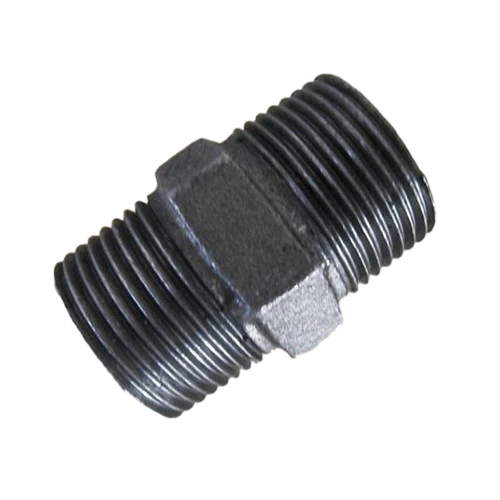Mobile:+86-311-808-126-83
Email:info@ydcastings.com
Advancements in Centrifugal Casting Techniques for High-Quality Aluminum Components
Exploring the Benefits and Applications of Centrifugal Casting in Aluminum Manufacturing
Centrifugal casting, a technique that utilizes rotational forces to shape molten metal into desired forms, has gained significant popularity in the aluminum manufacturing industry. This process offers numerous advantages, including improved material properties, efficient production rates, and versatility in design. This article delves into the various aspects of centrifugal casting aluminum, exploring its benefits, process details, and applications.
The Centrifugal Casting Process
Centrifugal casting involves pouring molten aluminum into a rotating mold. As the molten metal is introduced, centrifugal force propels the metal against the mold walls, resulting in a denser and more uniform casting. The rotation speed and angle of the mold can be adjusted based on the desired characteristics of the final product.
There are primarily two types of centrifugal casting vertical and horizontal. In vertical centrifugal casting, the mold is oriented vertically, which is particularly useful for producing cylindrical parts such as pipes and tubes. Horizontal centrifugal casting, on the other hand, is ideal for larger components and provides better control over the material flow.
Advantages of Centrifugal Casting Aluminum
1. Superior Material Properties One of the primary advantages of centrifugal casting is that it produces superior mechanical properties compared to conventional casting methods. The rapid cooling and pressure exerted during the process result in a fine-grained microstructure, enhancing the strength and fatigue resistance of the aluminum alloy.
2. Reduced Porosity and Defects The centrifugal force aids in eliminating air pockets, ensuring a denser casting with minimal porosity. This is particularly important for components that require high structural integrity and fatigue resistance.
3. Efficient Production Rates Centrifugal casting can achieve high production rates due to the continuous nature of the process. Once the mold is spinning, it can be filled rapidly with molten aluminum, reducing lead times and increasing throughput. This makes it an attractive option for industries that require large quantities of parts.
4. Versatility of Designs This casting technique can accommodate a wide range of shapes and sizes, making it suitable for producing complex geometries. The ability to create intricate designs with thin walls or hollow sections adds to its versatility in various applications.
centrifugal casting aluminum

5. Minimal Waste The centrifugal casting process generates less waste compared to traditional methods. The controlled pouring and shaping result in near-net shapes, which reduces the need for extensive machining and allows for a more efficient use of raw materials.
Applications of Centrifugal Casting Aluminum
Centrifugal casting is utilized in a variety of industries due to its ability to produce high-quality aluminum components. Key applications include
1. Aerospace and Automotive Industries Components such as engine blocks, cylinder heads, and wheels benefit from the enhanced mechanical properties achieved through centrifugal casting. These parts require high strength-to-weight ratios and superior fatigue resistance, making centrifugal casting an ideal choice.
2. Pipelines and Machinery The production of large pipes and heavy machinery components often employs centrifugal casting. The process produces strong, durable parts that withstand high pressure and demanding operational conditions.
3. Marine Applications In the marine industry, centrifugal casting is used to manufacture various components such as propellers and shaft tubes. The corrosion resistance and lightweight nature of aluminum castings make them suitable for marine environments.
4. Electrical and Electronic Components Certain electrical fittings and enclosures are produced using centrifugal casting. The precision and reliability of the components are critical in ensuring optimal performance and safety in electrical systems.
Conclusion
Centrifugal casting is a transformative technique in aluminum manufacturing that enhances the performance and longevity of components across various industries. With its ability to produce high-quality, dense, and defect-free parts, coupled with efficient production methods, it stands out as a preferred choice for manufacturers. As technology evolves and the demand for aluminum components continues to grow, the prominence of centrifugal casting in the manufacturing landscape is expected to increase, paving the way for innovations and advancements in the field. Whether in aerospace, automotive, or marine applications, centrifugal casting remains a pivotal technique shaping the future of aluminum production.
-
Why Should You Invest in Superior Pump Castings for Your Equipment?NewsJun.09,2025
-
Unlock Performance Potential with Stainless Impellers and Aluminum End CapsNewsJun.09,2025
-
Revolutionize Your Machinery with Superior Cast Iron and Aluminum ComponentsNewsJun.09,2025
-
Revolutionize Fluid Dynamics with Premium Pump ComponentsNewsJun.09,2025
-
Optimizing Industrial Systems with Essential Valve ComponentsNewsJun.09,2025
-
Elevate Grid Efficiency with High-Precision Power CastingsNewsJun.09,2025











